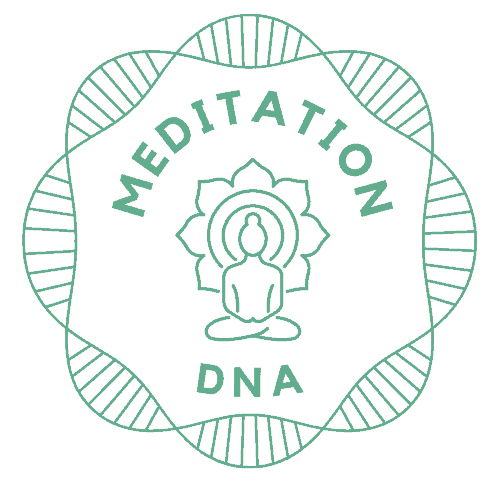
Meditation has been around for ages but most people don’t understand how it works so let’s learn about what it is and how to be relaxed. Next stop – relaxation station.
Meditation is a way to get into a relaxed state where thoughts stop racing through your head and you start feeling calm, serene, and clear-headed.
It’s been proven time and time again that meditation can help improve our mental health and well-being. In this blog post, I’m going to show you why it can also lead to greater relaxation while helping you achieve your goals faster.
You might not be too familiar with meditation or even how to do it – head to “What is Meditation” and “How to Meditate” to gain more insight on this.
Relaxation is a big by-product of meditation and other mindfulness activities and in our fast-paced lives, we could have more of both of these. People have lost the ability to intuitively relax as society has become stressed and highly strung.
Relaxation meaning
The meaning of relaxation is simple but less so to practice. Relaxation is a state of peace and harmony where we feel free from tension and stress. When we relax, our minds become calm and clear, which helps us to recover faster from any stressful situation. It also has great energizing and rejuvenation properties as it helps keep our brains alert and fresh – not in a frenzied way but in a calm way. Relaxation techniques are really helpful for physical health as well as mental health. By teaching ourselves to relax on a cellular level we can decrease the overall stress we experience drastically.
Relaxation on a cellular level
Relaxation on a scientific and biological sphere occurs when there is an interference of nerve stimulation. This can be caused by external or internal forces. Since our minds (i.e. brains) are mostly made up of nerve tissue that extends to the rest of our bodies we can conclude that relaxing the mind is akin to relaxing the body. Fundamentally it works the same way and therefore has such great influence on each other. A tense mind is going to make for a tense body and vice versa.
So your next question might be “How do relaxation techniques influence our biochemistry?”…
Well, the short answer is anything that brings us into a relaxing state (whether a physical or mental activity) produces certain neurotransmitters in our brains which leads to our muscles relaxing and our minds becoming calmer.
Neurotransmitters that are greatly increased during mindfulness, meditation, or other relaxation techniques are:
- Gamma-aminobutyric acid or GABA (decreases anxiety and increases feelings of calm)
- Seratonin (regulates sleep, mood, appetite, and sexual desire)
- Dopamine (produces all the feel-good feelings)
- Endorphins (produce feelings of euphoria)
- Adenosine (suppresses arousal and improves sleep)
- Melatonin (produces feelings of sleepiness)
Neurotransmitters that are greatly decreased during mindfulness, meditation, or other relaxation techniques are:
- Cortisol (also known as the stress hormone)
- Epinephrine or adrenaline (produces feelings of alertness and an important role in the fight or flight stress response which prepares us for action when we feel in danger)
These neurotransmitters directly speak to our bodies and therefore we act accordingly. We can learn to have different reactions to certain situations, that are calmer and less reactive in whichever situation we find ourselves in. We can take control of our health and stress response by bringing ourselves to a relaxed state at any given moment, through these techniques.
So what are these techniques then?
How can we access relaxation for the mind and body?
Relaxation comes in many different forms and it does not necessarily mean doing nothing while lying in front of the couch. There are different types of relaxation techniques for both relaxing your mind and relaxing your body. Because of the way the mind works, most relaxation techniques affect both the brain and the rest of the body.
Relaxing techniques include meditation, yoga, tai chi, deep breathing exercises, progressive muscle relaxation, guided imagery, massage therapy, aromatherapy, music therapy, biofeedback, hypnosis, acupuncture, herbal remedies, and others.
Let’s explore some practical ways you can implement in your daily life to relax on a deeper level.
6 Mindful ways to relax the mind
1. Breathing exercise for relaxation: Breathing techniques
Although relaxation techniques such as meditation help reduce stress levels, they do not eliminate them. If you want to relax completely, you need to learn how to control your body consciously. The best way to achieve this state of mind is through deep breathing exercises. Deep breathing helps oxygenate our blood flow and reduces our heart rate. By doing these exercises regularly, we can calm ourselves down and live a happier life.
Breathe slowly and deeply for at least five minutes You could also try other breathing techniques for relaxation such as the 7/11 method or box breathing technique.
Breathe deeply. Take a few slow breaths through your nose. This helps oxygen enter your lungs. Oxygen is needed by your brain to think clearly. Slow breathing calms your thoughts.
2. Take a warm bath or shower
Heat relaxes our muscles and eases tension in the body. Add candles or incense for aromatherapy style relaxation and engage all the senses in the relaxing experience. Since our bodies and minds are connected a relaxed body leads to a calming state of mind too.
3. Instrumental music, binaural beats, or low-frequency music
Relaxation songs and music such as relaxation instrumental music, relaxation zen music, or binaural beat frequencies help calm down your mind and body.
What are binaural beats? – Read more here
4. Engage in mindfulness meditation or other mindfulness practices.
To be clear, mindfulness means focusing your attention on whatever is going on at any given time without judgment. It’s not thinking ahead; it’s just paying attention to what’s here and now. For example, listening to your body and tuning in to what it needs rather than what you should be doing. You told yourself you will go to the gym but maybe what you need instead is to eat a nourishing meal and take a nap.
Are you taking long breaths or short ones? Do they feel like they’re going through your chest or are you accessing your breath low into your belly? You may be able to distinguish between sounds like noise and silence if you pay close attention. The point is not to try to fix anything; simply observe what’s going on.
Explore the different type of meditation here
5. Journalling
Write your thoughts down in a journal. Writing about our emotions helps us release them.
6. Guided imagery eg. meditation guided relaxation
This uses visualization techniques to relax the mind. Guided Imagery involves imagining oneself in a specific situation that makes one feel calmer and less stressed out.
Think of something pleasant. Think about what makes you happy. What brings you joy? Do this activity with your eyes closed so that you don’t have to see anything else.
This is best done guided by a teacher through podcasts, recordings, youtube videos, meditation apps, or even attending a mindfulness class.
5 Mindful ways to relax the body – How to do relaxation
1. Practice relaxation yoga poses.
There are many beginners yoga classes both online and at studios to get started. Yoga strengthens the body while it relaxes the mind. The benefits of yoga are endless! Any form of yoga style has deep relaxation qualities but for specific yoga postures for relaxation practicing a Yin or Restorative style would be the way to go.
Find out more about the physical and mental benefits of yoga and the yoga poses relaxation techniques.
2. Progressive muscle relaxation – relaxation of skeletal muscle
Helps relax muscles by focusing attention on each part of the body, tensing it up, and then releasing and relaxing all that tension. This process involves moving through the body and tensing and relaxing each muscle group one by one. Usually moving from feet, ankles, lower legs, upper legs, buttocks, back, fingers, hands, forearms, upper arms, shoulders, neck, face, and head or voice versa (top to bottom).
Progressive muscle relaxation can help relieve stress and anxiety by relaxing muscles through progressive muscular contraction and release. It might not be able to solve every problem, but if you’re having trouble sleeping at night, this could give you some relief too. If you want to get better at falling asleep, relaxing your muscles may be one way to help as it accesses your parasympathetic nervous system or otherwise known as our “rest and digest” system.
Relaxation techniques are an excellent way to improve your sleep patterns. You might be thinking: “I’m not a very good sleeper! I don’t get enough rest or quality sleep. How do I fix my sleeping habits?”. Progressive muscle relaxation is one of the most popular methods for improving sleep. It works by relaxing tense muscles. This helps you feel more relaxed and ready to go to bed at night.
3. Go for a relaxing walk or stroll
Making time to do things you enjoy can also help you relax. Choose an activity that pleases you – a bonus if this activity involves getting outside and enjoying it in nature.
4. Go for a massage
Aromatherapy, hot stone massage, Swedish massage, deep tissue massage, sports massage, or any other form of relaxation massage… There are so many different massage techniques to choose from that are all suited to bring about different forms of relaxation. If you are on a budget why not ask a friend or a partner to give you a back rub!
5. Drink a warming beverage
Preferably something like a herbal tea or even a chai latte. Opt for it to be caffeine and alcohol-free as this puts extra stress and strain on our adrenal glands which can wreak havoc on our sleep patterns and make us feel tenser.
6. Relaxin and relaxation when pregnant
Relaxin is the relaxation hormone produced when a woman goes into child labor. Although this gets produced naturally and automatically once labor contractions have started meditating while pregnant has been shown to decrease high levels of stress the body experiences during pregnancy and childbirth and when the birth process comes along it has been shown that a woman that meditates regularly actually produces more relaxin naturally as she knows subconsciously how to access deep relaxation easier and more efficiently.
Practicing a relaxation technique for anxiety caused by pregnancy or even a guided meditation relaxation for sleep while pregnant can allow for the overall pregnancy to be easier to handle and a beautiful, abundant experience.
Bonus: Fun and simple Relaxation games online:
If all these other techniques seem too overwhelming for you right now why not try these games online that have been specifically curated by their creators to bring a sense of calm and peace to your mind, by taking your mind away from other disrupting thoughts and worries.
- Flow
- Home Sheep Home
- Flower Reaction
- Casanova
- Little Wheel
- Sleeping Tiger Jigsaw
- Drifting Afternoon
- Bejeweled
- Fireboy and Watergirl
- Echogenesis
So now the next time somebody hits you with a “just relax” instead of getting frustrated, take a deep breath (or 5) and practice one of these relaxation techniques to calm your mind and your body.


